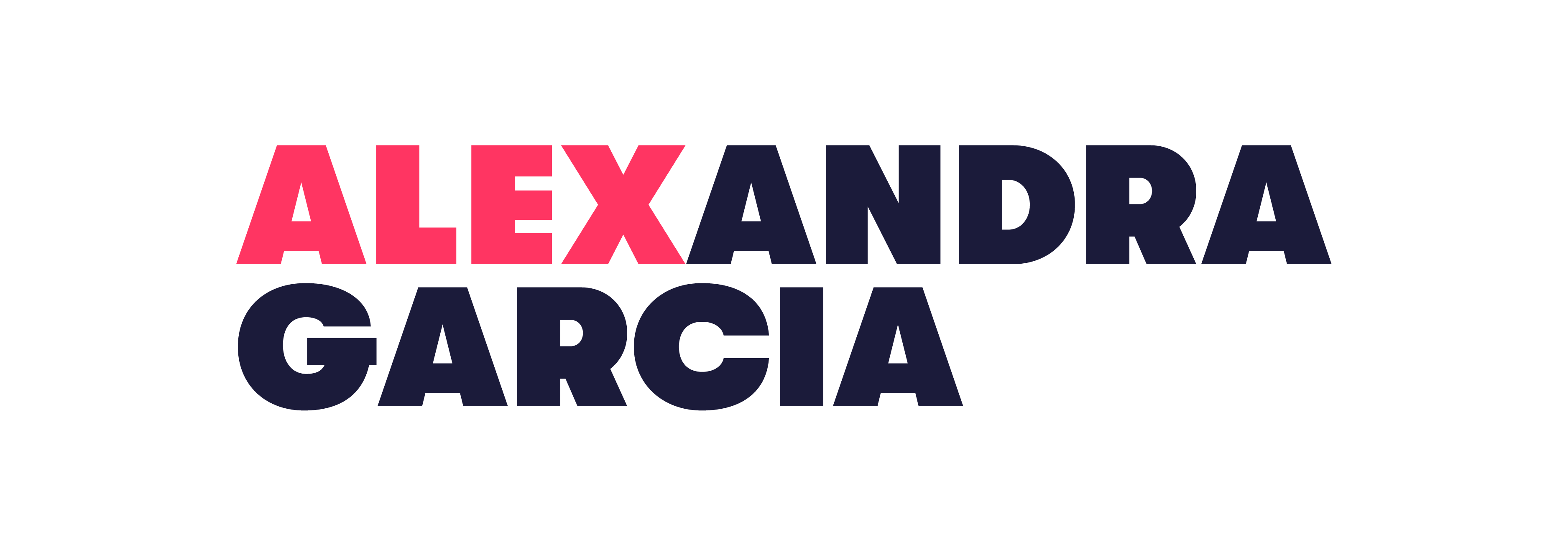I was one of eight student designers chosen to work on this project in partnership with Microsoft. We were given brief that challenged us to envision a Meta OS system that 'keeps citizens at its center and drives innovation for everyone'. This project challenged us to design an experience for a future state of more responsible, respectful technology. What would we do differently if we could start over? What would we design within a truly open and human-centered system? How do we create a Meta OS that respects people's time, agency, and attention?
Here are all eight fellows! We started our six week course by talking about the brief and what might be expected of us. As a group we split up and had conversations about our life/personal values. These conversations were very relevant to the world views that were being considered in the brief given to us by Microsoft. After diving into each worldview, we split up into two teams: Team 1:Education & Wellness and Team 2:Ecological Regeneration & Economical Theory
I was part of Team 1. My initial research included methods from the Waldorf & Montessori schools, the advantages and disadvantages of technology in educational systems, Applying tech to refugee groups and more global educational systems, and also briefly looking into Google's Steve Vranakis' previous and ongoing educational projects.
As a team we were very intrigued by how we can bring 'better' education to underprivileged communities. How could we skew the education these groups are being taught? Is that the real issue? We had conversations around Mathematics and Science being taught to everyone, but not being necessary anymore when everyone has access to a calculator if they have a cellphone.
Is education taught around the world really enabling students for the future and their overall wellness?







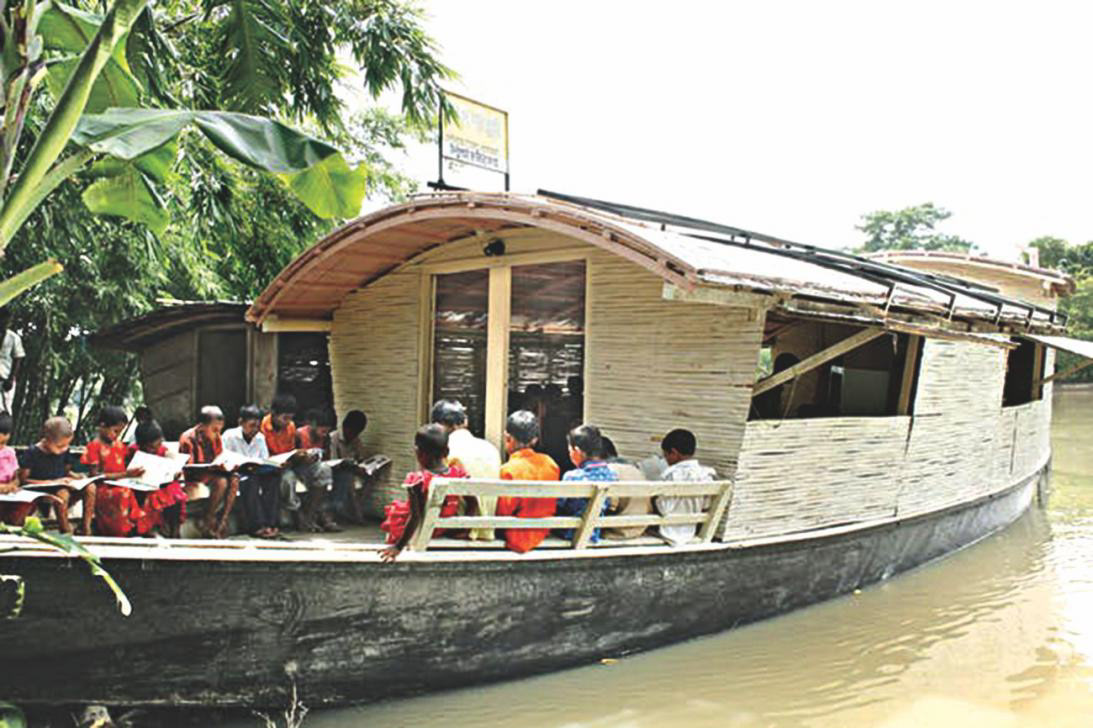
Each week we had check-in meetings with our Microsoft supervisors: Danielle McClune & Tiffany Chen. They always advised us and gave us feedback moving forward, making sure that we thought about different perspectives and what possible outcomes could look like. Our first presentation on Education & Wellness looked like this.
(My concept was the first one: focusing on designing to broaden & improve access to education around the world to underprivileged communities and refugee groups in developing countries. The other two concepts were made by my other group members)






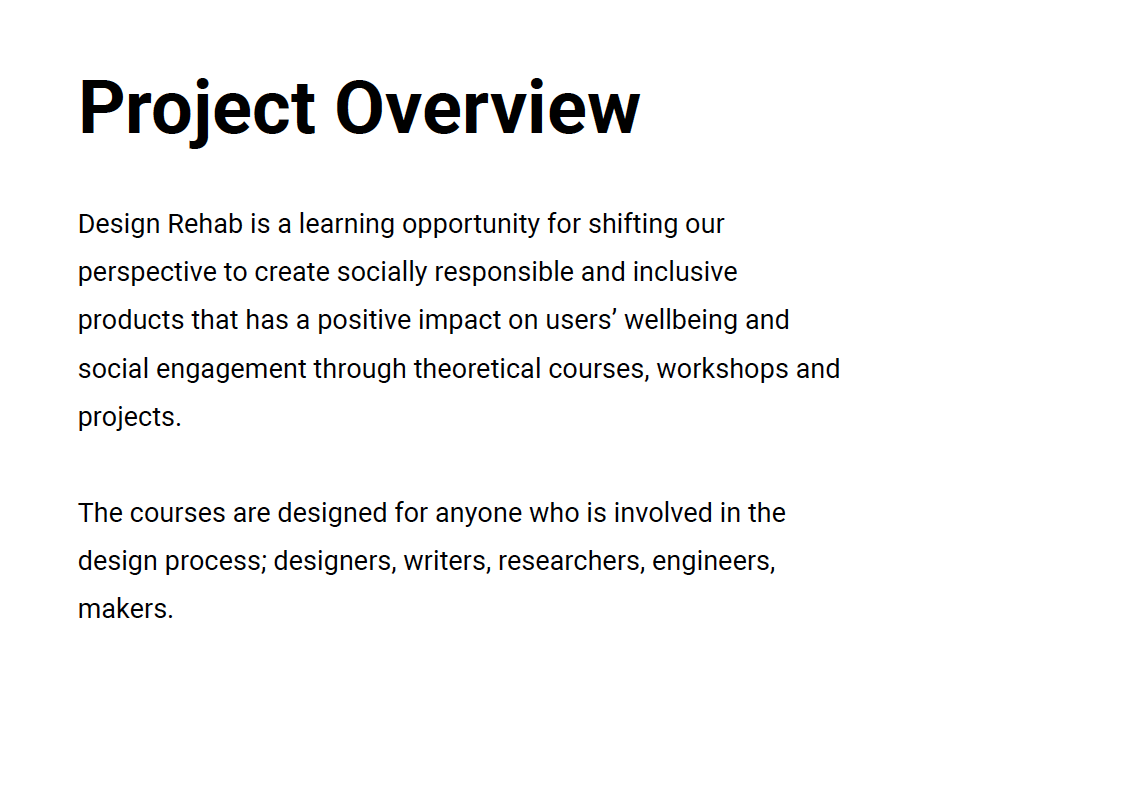








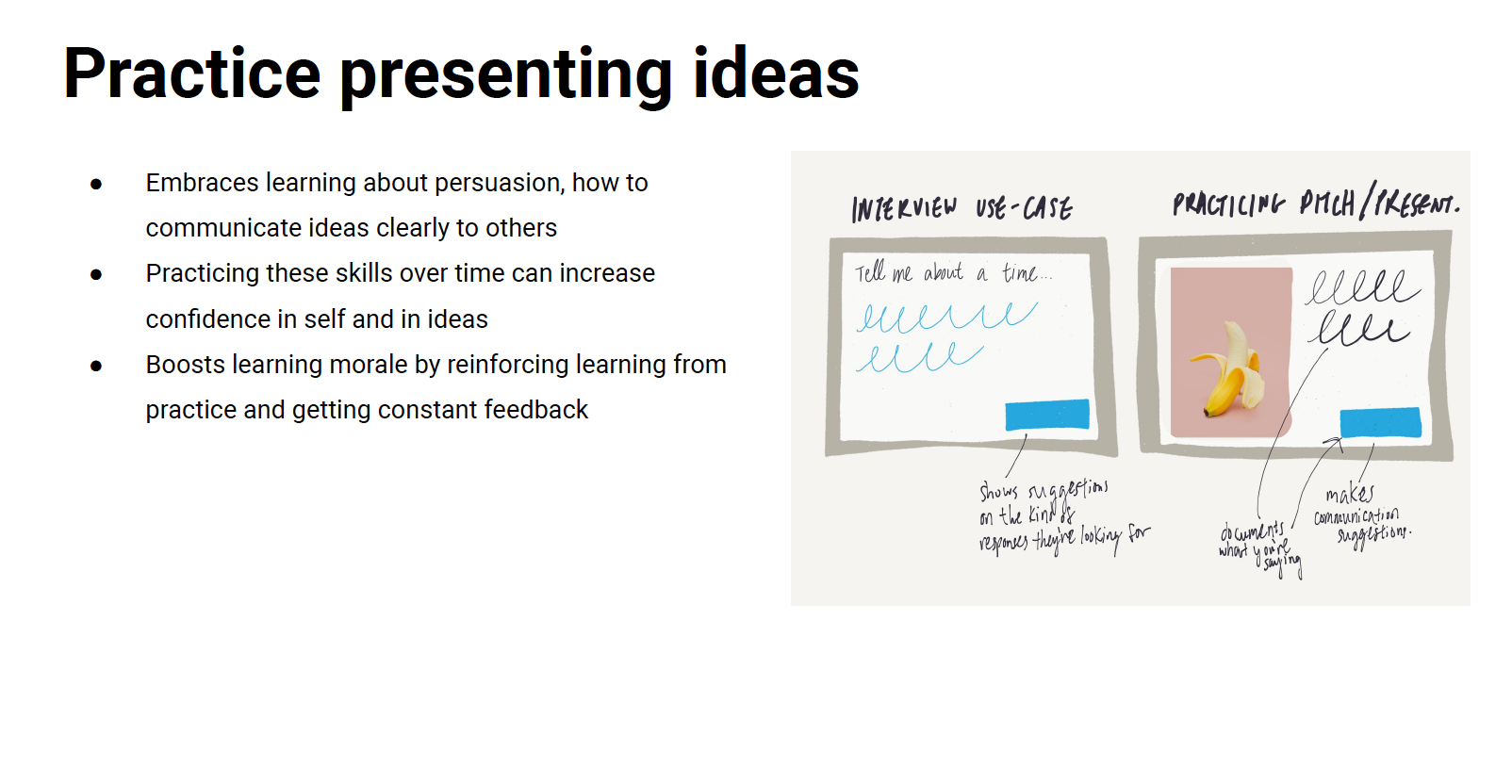

This presentation was given via video chat to Danielle & Tiffany one week prior to going to Seattle and give a midterm presentation on our concept.
In the meantime, the other group was doing the same, focusing on their topic and worldview ideas.
The feedback we received on this presentation including bringing our scope down and focusing our ideas in a more concentrated space. Both of the teams had lots of ideas in the air, but for the audience at Microsoft in Redmond, Washington, we were advised to focus a bit more in one area. We also were tasked to think about our title instead of Education & Wellness to "Education As Wellness."
We decided to combine aspects of all our concepts and make a new presentation. The following is our 2nd presentation- given at Microsoft in Redmond, Washington to Danielle, Tiffany, and Microsoft Creative Director- Albert Shum + invitees!



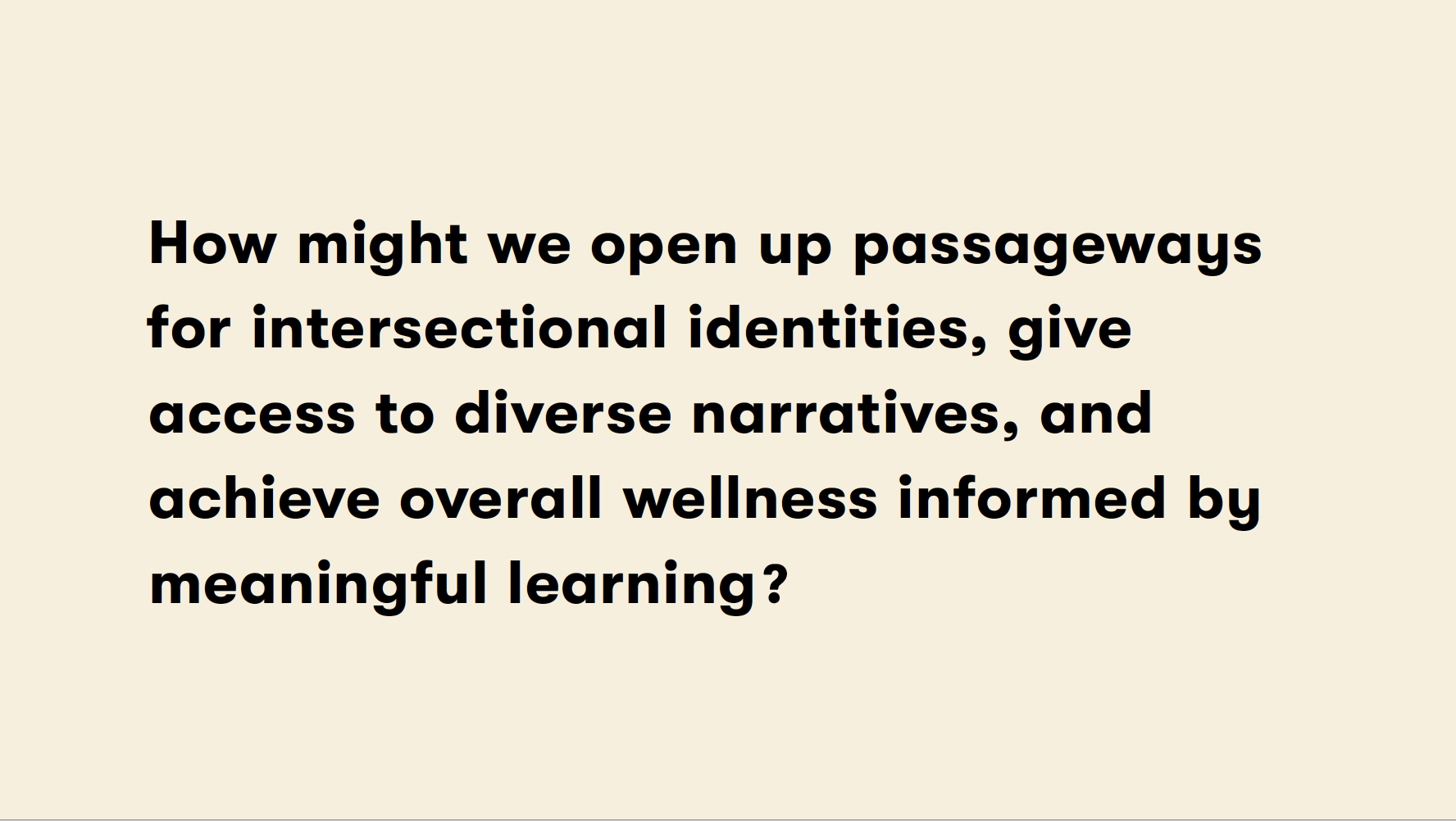






















Presenting at Microsoft was an experience on its own and brought so many nerves upon us all! The main idea of this presentation was to explain how much we'd done thus far. Here are some quotes voiced during our presentation that day:
"We must consider how our biases & assumptions shape systemic issues. It is important to examine spaces where we access information, and to find value in learning from missing histories, narratives, and ideas from different perspectives."
"Before today's presentation we started with 3 big concepts that focused on relearning how we design, access to information, & global enlightenment. The main ideas for our current concepts were taken from these and still include designing for trust, improving access to information & meaningful learning, and creating inclusive environments. We took critical design & accountability from relearning how we design, sharing knowledge, having longer audiences & meaningful learning from global enlightenment & intersectional identities from access to information."
"Our core idea revolves sharing knowledge of intersectional identities beyond Western educational practices."
"Education As Wellness means to create better design & educational tools that can inform a wider audience across a range of socioeconomic scales. We want to make sure to move away from device-centered design."
"How might we open up passageways for intersectional identities, give access to diverse narratives & perspectives, and achieve overall wellness that is informed by meaningful learning?"
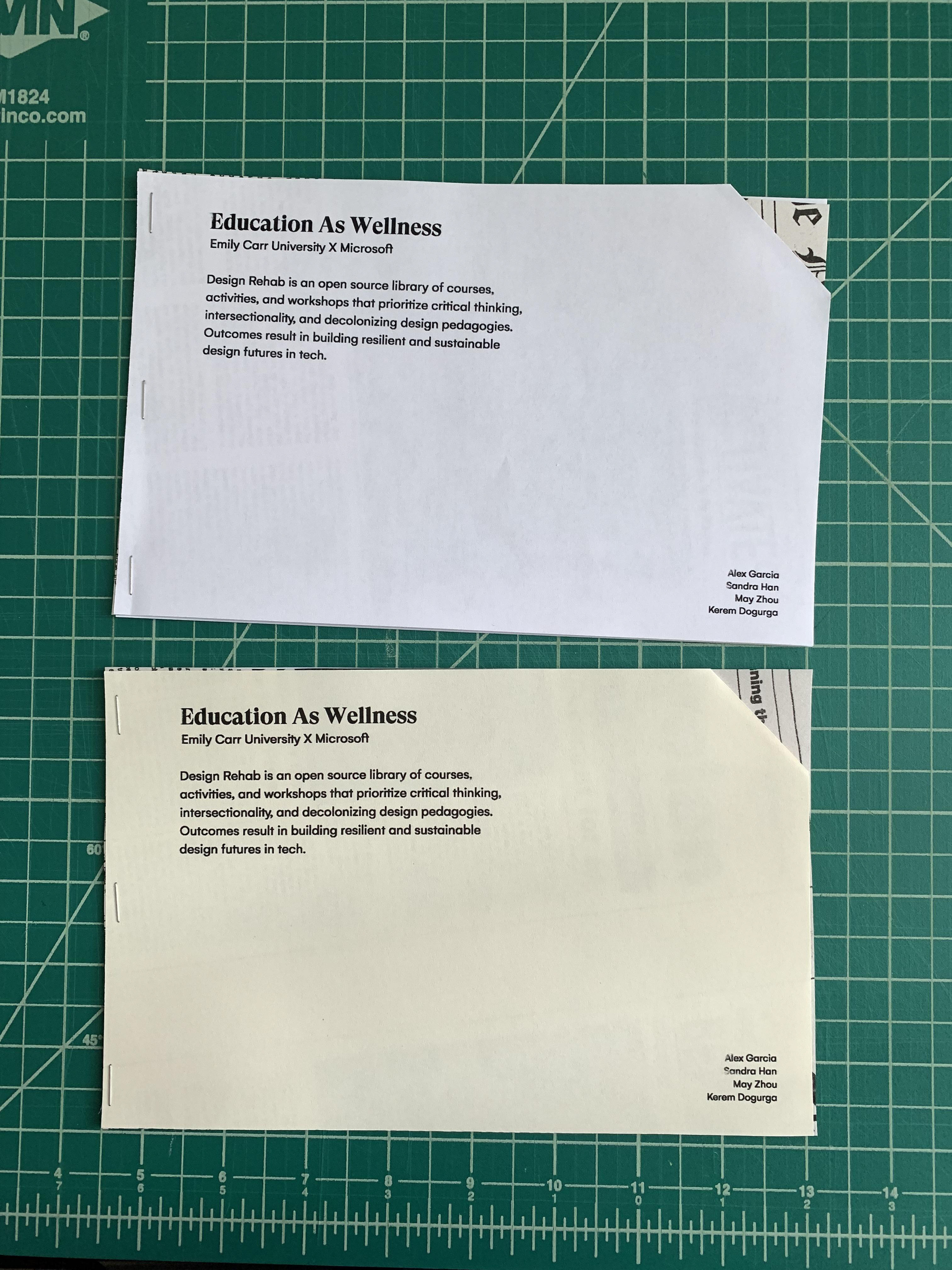










The feedback we received at Microsoft was to make the presentation a more interactive experience. We took that into consideration, while still honing in on our concepts. One of my group members had the idea of "The Design Rehab" workshop. It is an open-source library of workshops, readings, and activities, that prioritize critical theory and intersectionality in design thinking to decolonize current design education.
These courses are designed to challenge Western design education and rhetoric that centralizes the future of tech through colonization. Outcomes from these courses would equip designers to apply learnings from intersectional identities beyond Western pedagogies.
The final presentation was set-up as a brief look into The Design Rehab. It included some examples of possible outcomes that could be produced from experiencing the course(s). We worked together on Figma files, having conversations and creating content for these outcomes. We wanted to have as many outcomes as we could to present to Microsoft on the final presentation day.
"Future-Proofing Alternate realities" was the workshop we chose to be interactive with all the guests who came on presentation day. 'Liberating Structures' had two parts TRIZ & TROIKA: great for individuals to identify any challenges they are facing in their professional life, like a design project, or in their personal life, like working towards a healthy lifestyle. This exercise is also perfect for anything from smaller or larger challenges. Examples of scopes in challenges you can think of can range from personal goals to challenges with a work project.







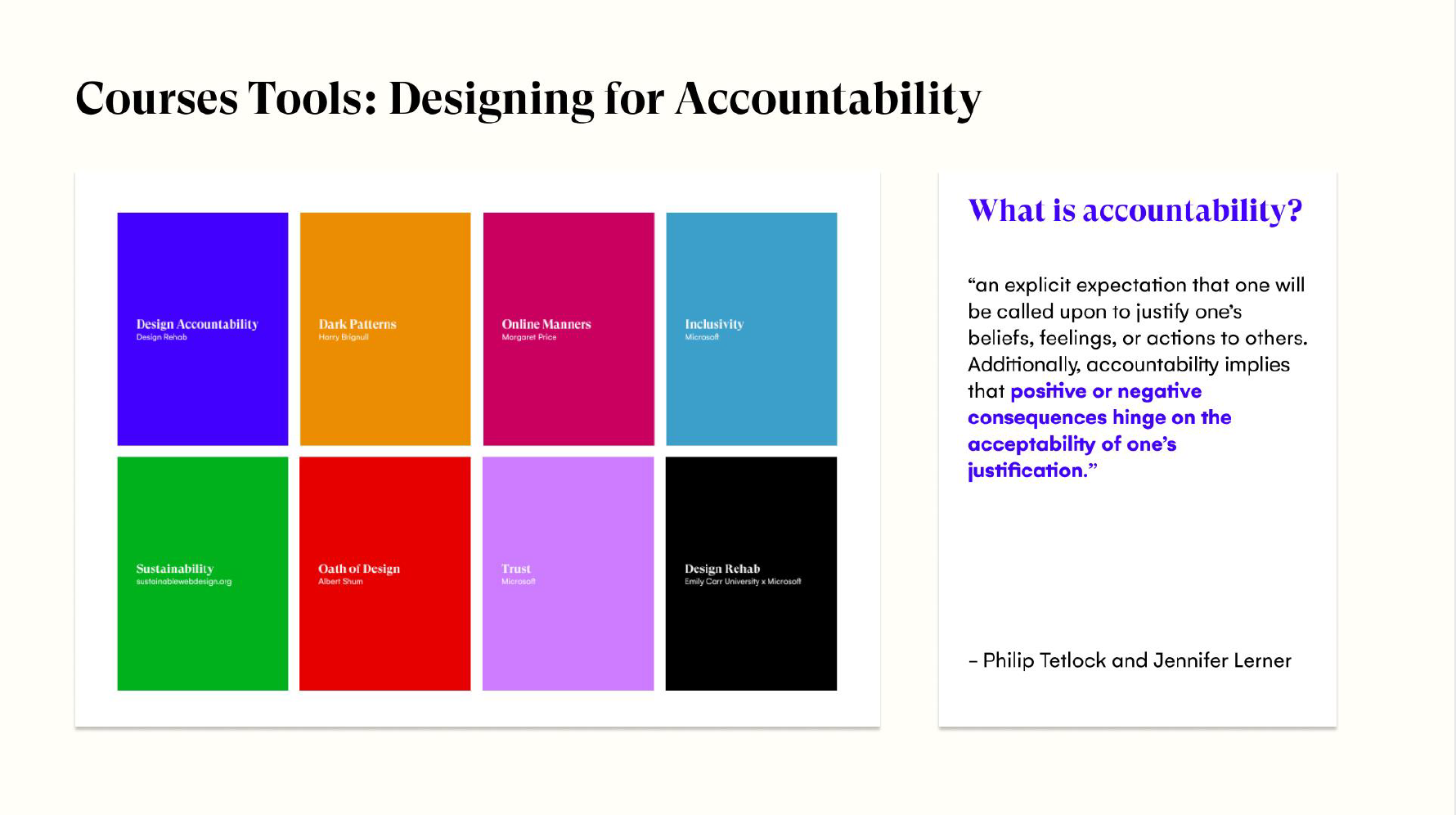








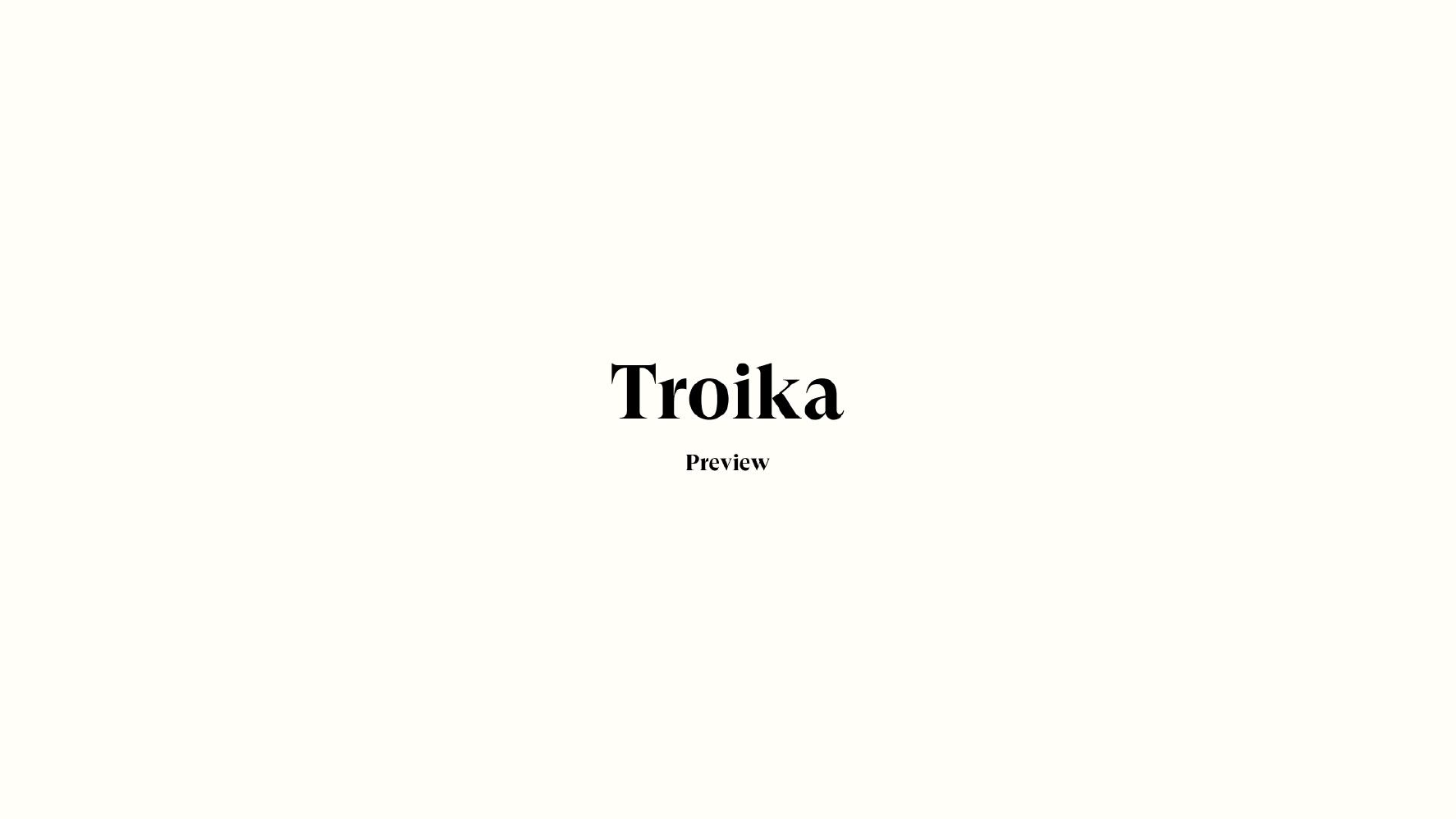
















We provided all guests with a hand-made notebook that they could use during the workshop and to write feedback & comments for us at the end. All physical outcomes were displayed on a table in front of us while we presented so guests could look through them at the end.
(Here are photos of the in-session workshop)





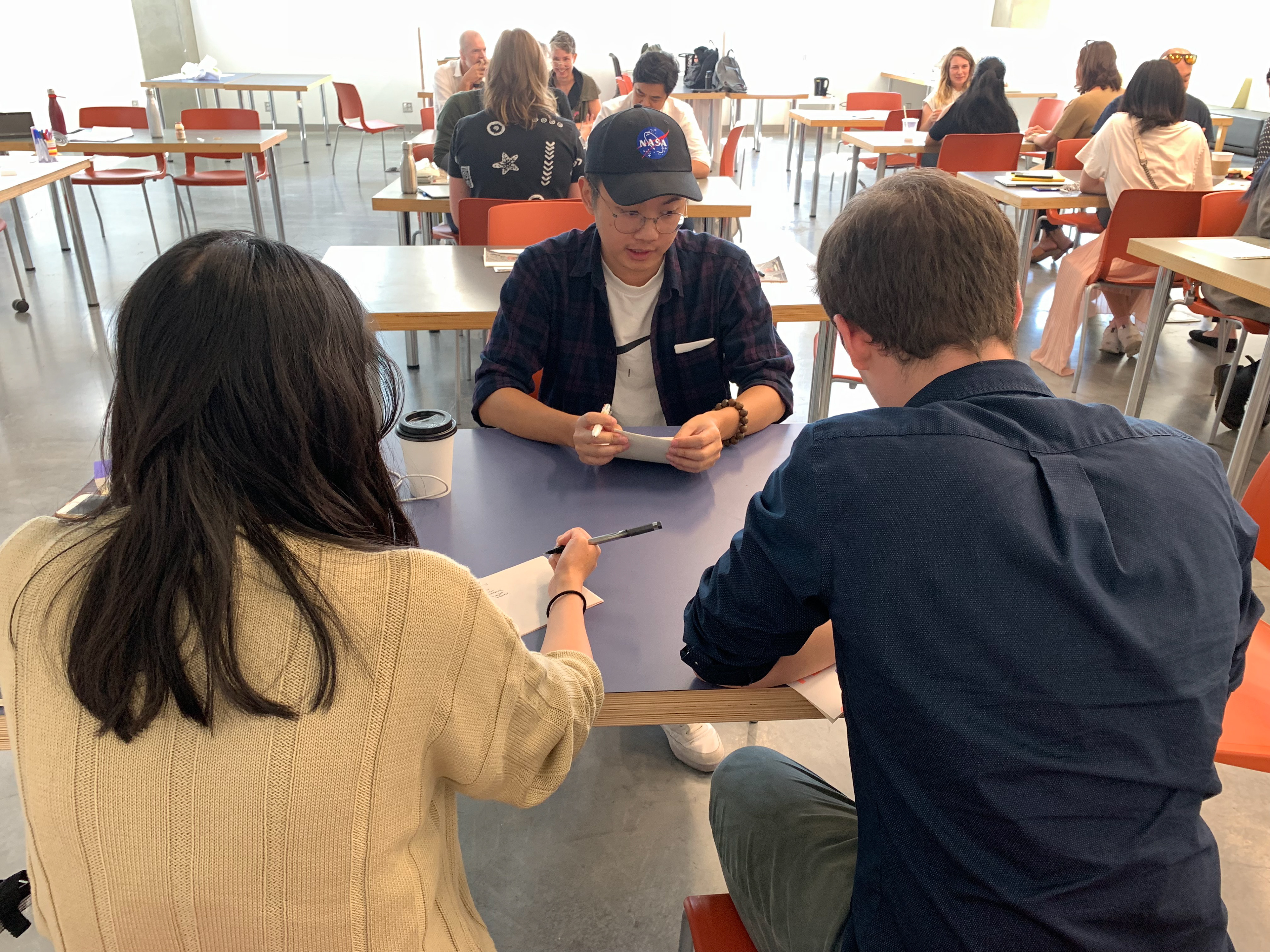








* * * The link to "The Design Rehab" website is: www.thedesignrehab.com * * *
As a team, encompassing all of our ideas, research, and concepts together, we provided a prospectus to all the project supervisors.
Prospectus found here: https://drive.google.com/file/d/1mst7aZzVMOYCsedpVAZkaFX_TciQSORk/view
My personal roles in this project were: Researcher, Brand designer, Visual designer, Prototyper, Writer, Editor
This six week experience has changed my perspective of design. Being a Communication Designer has so many opportunity spaces I had never thought of before. Working alongside recent graduates in other design specialties has broadened my own spectrum and created spaces where great design has flourished. I am well aware that these opportunities to work with big name companies like Microsoft do not come often, nor do they get handed out to anyone. For this I am eternally grateful and proud of my accomplishment. "The Design Rehab" concept has also made me realize so many areas that need to be reconsidered in design processes and will definitely influence my future designs. Thank you to the Microsoft Team: Danielle McClune, Tiffany Chen and Albert Shum; Thank You Cameron Neat for creating this opportunity space and guiding us along the way; & Thank you to the fellows: Sandra, Kerem, May, Curtis, Deanna, Morgan and Julie- without you nothing would've been possible!
